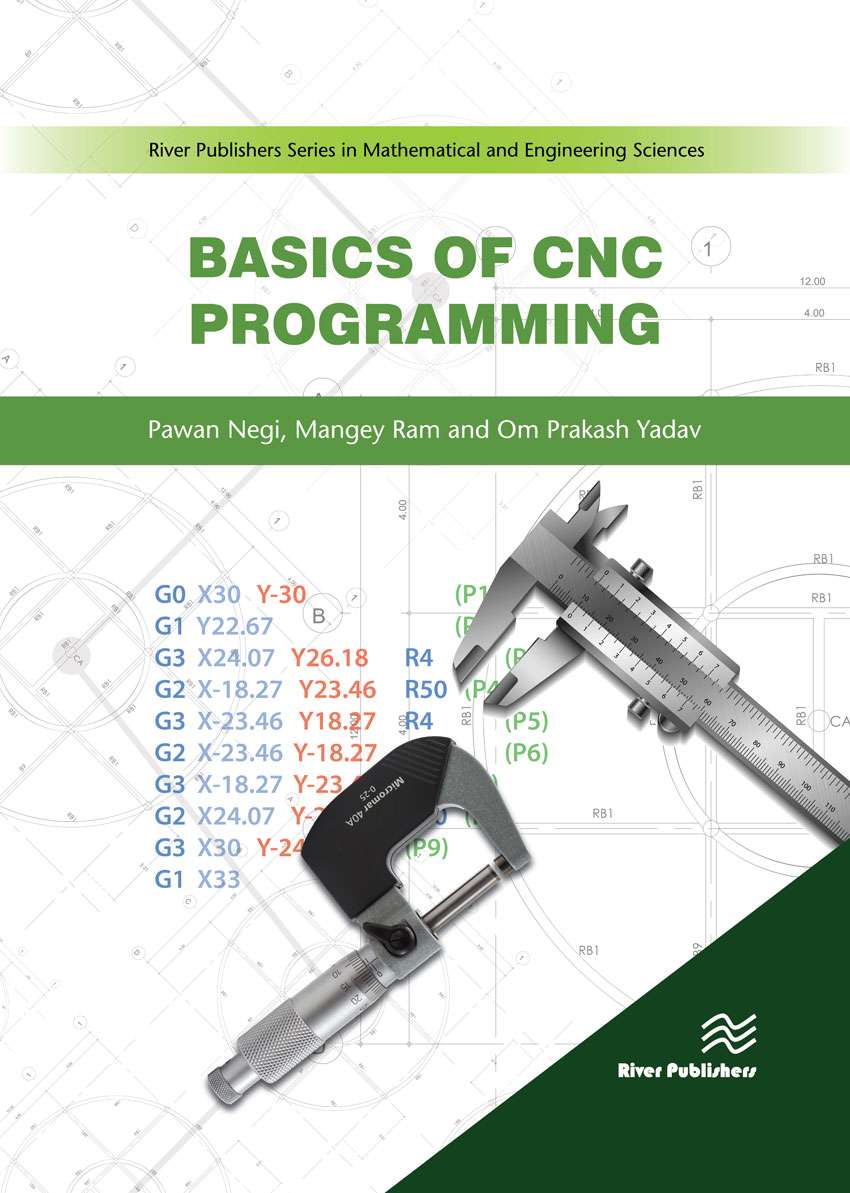
Basics of CNC Programming
River Publishers Series in Other Technologies
Basics of CNC Programming
Authors:
Pawan Negi, Graphic Era Deemed to be University, Dehradun, India
Mangey Ram, Graphic Era Deemed to be University, Dehradun, India
Om Prakash Yadav, North Dakota State University, North Dakota, USA
ISBN: 9788770220439 e-ISBN: 9788770220422
Available: March 2019
Before the introduction of automatic machines and automation, industrial manufacturing of machines and their parts for the key industries were made though manually operated machines. Due to this, manufacturers could not make complex profiles or shapes with high accuracy. As a result, the production rate tended to be slow, production costs were very high, rejection rates were high and manufacturers often could not complete tasks on time.
Industry was boosted by the introduction of the semi-automatic manufacturing machine, known as the NC machine, which was introduced in the 1950's at the Massachusetts Institute of Technology in the USA. After these NC machine started to be used, typical profiles and complex shapes could get produced more readily, which in turn lead to an improved production rate with higher accuracy.
Thereafter, in the 1970's, an even larger revolutionary change was introduced to manufacturing, namely the use of the CNC machine (Computer Numerical Control). Since then, CNC has become the dominant production method in most manufacturing industries, including automotive, aviation, defence, oil and gas, medical, electronics industry, and the optical industry.
Basics of CNC Programming describes how to design CNC programs, and what cutting parameters are required to make a good manufacturing program. The authors explain about cutting parameters in CNC machines, such as cutting feed, depth of cut, rpm, cutting speed etc., and they also explain the G codes and M codes which are common to CNC. The skill-set of CNC program writing is covered, as well as how to cut material during different operations like straight turning, step turning, taper turning, drilling, chamfering, radius profile, profile turning etc. In so doing, the authors cover the level of CNC programming from basic to industrial format. Drawings and CNC programs to practice on are also included for the reader.
Industry was boosted by the introduction of the semi-automatic manufacturing machine, known as the NC machine, which was introduced in the 1950's at the Massachusetts Institute of Technology in the USA. After these NC machine started to be used, typical profiles and complex shapes could get produced more readily, which in turn lead to an improved production rate with higher accuracy.
Thereafter, in the 1970's, an even larger revolutionary change was introduced to manufacturing, namely the use of the CNC machine (Computer Numerical Control). Since then, CNC has become the dominant production method in most manufacturing industries, including automotive, aviation, defence, oil and gas, medical, electronics industry, and the optical industry.
Basics of CNC Programming describes how to design CNC programs, and what cutting parameters are required to make a good manufacturing program. The authors explain about cutting parameters in CNC machines, such as cutting feed, depth of cut, rpm, cutting speed etc., and they also explain the G codes and M codes which are common to CNC. The skill-set of CNC program writing is covered, as well as how to cut material during different operations like straight turning, step turning, taper turning, drilling, chamfering, radius profile, profile turning etc. In so doing, the authors cover the level of CNC programming from basic to industrial format. Drawings and CNC programs to practice on are also included for the reader.
CNC Machine, CNC Programming, Turning Machine Programming, Preparatory and Miscellaneous Code (G & M Code), Turning Operation, Adjustable Cutting Factor in Turning Machine, Cutting Speed, Spindle Speed, Depth of Cut, Cutting Tool Geometry, Cutting Tool Tip Location, Procedure of CNC Program, Machine Zero, Work Zero, Machine Axis, Turning Machine Coordinates, Model Command and Non Model



